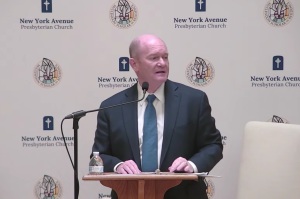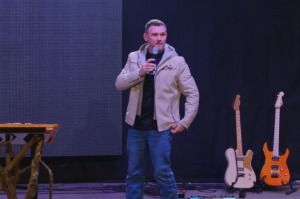Re-imagining America: The quest for authentic hope (pt. 3)
What will the “new America” gestating in the womb of time look like?
In some ways the future seems more threatening than promising.

It would be nice to paint a rosy picture here, but now is a time demanding hard facts. We must be honest as we contemplate the future.
There are groups who will hail the new America. However, there are foreboding trends even for them. For example, some secular prognosticators may celebrate restrictions of belief and speech on “Christian fundamentalists” and “far-righters”. However, the loss of freedoms of expression for some groups sets precedent and can threaten the liberties of all.
Current signs seem to show that free speech and belief may be increasingly controlled by the enlarging dominance of the elite cluster of information, entertainment, academia, government, and corporations.
Already, some conservative Christian broadcasters have been exiled from some popular channels and other media. A future looms in which churches, their pastors, leaders, and congregants may be prosecuted for refusing to limit their doctrine, teaching, and ministry actions to those prescribed by the state.
In the near-term of the new America, propaganda may displace truth and fact. This means the nation could become more reactionary, and aided by the internet, more prone to violence and rioting.
Hatred between categories of people is likely to intensify. The antipathy of one group against another will be amplified by the divisions that are even now being opened by activists of many persuasions.
This dark outlook spurs the question: Is there any hope for the future? The answer: there is, but we must look to authentic objective hope and not some dreamy subjective figment of our own imagining.
As recorded in Matthew 24, followers of Jesus Christ two thousand years ago posed the same question regarding hope for their world’s future. Jesus gave them the bad news first: they would be persecuted, arrested, and killed... hated all over the world, resulting in many losing their passion for Christ and His Kingdom and falling away in apostasy, as evil romps.
In the face of the above prospects in our day, new dangers will arise. The quest for hope will intensify. Desperate people and institutions may well be drawn into two (among many) forms of false hope: Victorian illusion or progressive postmillennialism.
Comparing the Victorian age (1820-1914) with ours proves that, as Mark Twain said, history may not repeat itself, but it does rhyme.
Triumphalism reigned in Victorian Britain. Many changes had altered the character and face of the society, even to the reshaping of theology. Social Darwinism had emerged from Charles Darwin’s evolutionary theory. Everything was moving forward in renewal and quality, and the survival of the fittest was evident in the hardy bloodlines of the upper classes.
Among other things, the Victorian illusion ignored the cancer of conflict metastasizing in the royal houses of Europe. The disease would ultimately erupt as the bloody tumor of the First World War. Victorian optimism proved illusory as lives and enterprises built on the Victorian sham were fatally infected.
“Death had made its nest in him and he did not know it,” wrote Solzhenitsyn in a brilliant description of diseased Stalin staring in a mirror at himself and his imperious uniform. So, death had made its nest in that Victorian society, and they did not know it.
Meanwhile, in the early twentieth century, parts of the American church fixed themselves on the illusion of progressive postmillennialism. The aims were good, but there was a huge problem: They believed that it was the destiny and mission of the church to bring in the Kingdom of God. This ignored the fact that Jesus Himself would bring the Kingdom at His return.
“Every day in every way the world is getting better” was the mantra that some happily chanted while the bacteria that would erupt in our period was growing under the skin of the developing country.
Now, in our quest for hope in this critical hour, we must examine what Jesus said and did to give his beleaguered disciples hope.
After telling the bad news about the near-term future, the Lord of time and history gave them the good news about the long view. All the hardships were not destructive—though they seemed and felt so—but were the “birth pangs” of a glorious age yet to come.
Jesus refused to paint a rosy picture but gave His followers truth about the “birth pangs”. Thus, by Jesus’ example, we must speak on two levels of time: the immediate and the ultimate. It is on that scale that the Kairos of God’s work intersects with the chronos of finite time we inhabit. So, we must stretch our vision out to the whole plan and way of God for the ultimate future.
As we do that, we get true perspective on suffering and hardship: the deeper the darkness, the brighter the light; greater the hunger, the greater the feast; the more intense the thirst, the more refreshing the drink; the more painful the absence, the sweeter the presence.
This may seem platitudinous, but it is the outlook that brings and sustains hope as we enter an uncertain future. Thus, the good news Jesus gave His followers that day 2,000 years ago—and to us who follow Him today—is that all the upheaval we experience constitute “birth pangs.”
The potential troubles ahead are real, but unto life, not death.
The great mission of churches in times like these is to speak honestly the hard truth, but against the backdrop of hope, and help people resist the pull into apostasy and desertion.
To do that the contemporary church must give hope that is authentic, not illusory.
Wallace B. Henley’s fifty-year career has spanned newspaper journalism, government in both White House and Congress, the church, and academia. He is author or co-author of more than 20 books. He is a teaching pastor at Grace Church, the Woodlands, Texas.
For media inquiries, contact: ChristianPost@pinkston.co



























